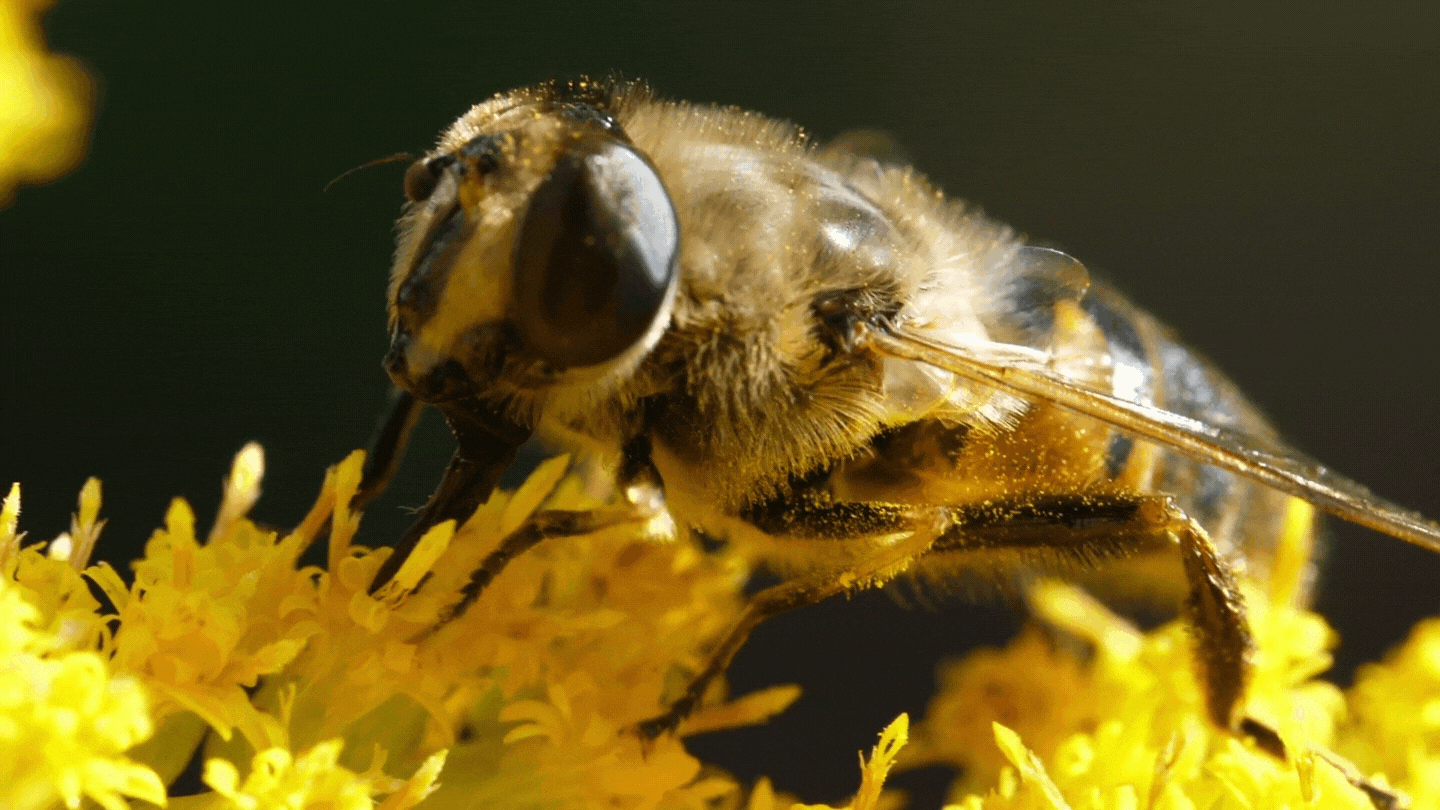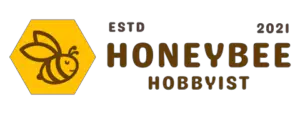The most common food bees eat is nectar, pollen, and the honey they produce. They also consume royal jelly, which is a milky secretion from young worker bees. Other supplementary foods used by beekeepers to keep their colonies healthy are cane or beet sugar, wheast, and water.
As a beekeeper, it’s your responsibility to ensure your colony can sustain itself. By keeping them healthy, they grow their population, reserving honey for the colony during your honey harvest and sometimes supplementing their honey supplies to keep the colony alive during the winter months.
This post covers all the foods bees eat and ways beekeepers can support their hives all year round.
What Do Bees Eat?
Nectar & Pollen
Pollen is a powdery substance produced by the reproductive process of plants.
It is one of the richest natural foods, containing all of the nutrients a honey bee needs: sugars, enzymes, carbohydrates, proteins, minerals, and vitamins.
Bees are considered pollinators because their natural process of collecting pollen for honey production pollinates the plants they arrive at, supporting the reproductive cycle of plant life.
Nectar is the other plant-based food that bees love to eat. Nectar is a sweet fluid produced by flowering plants. Nectar contains sugar, amino acids, water, carbohydrates, and proteins. Honey bees collect nectar using proboscis, which they use to make honey, to feed their young and themselves!
Flowers like goldenrod, milkweed, clover, dandelions, and fruit trees provide honeybees with nectar and pollen.

It is only the worker bees who gather the food for the hive. After collecting their fill and bringing back as much food as they can carry, another bee retains the nectar on her tongue, which evaporates until honey forms and is stored in the beehive. This becomes the primary food source for bees.
Royal Jelly
Royal jelly is a milky substance that’s produced by worker honeybees for the sole purpose of encouraging queen bees to thrive. It is secreted from the glands in the hypopharynx of the worker bees and fed to the larvae.
Royal jelly is a superfood that contains various vitamins and minerals and health supplements. Workers and drones feed on royal jelly during the first couple of days of larval development, while future queens feed on it as their steady diet throughout their development.
Although its full benefits are still being determined, some people may use this substance as a dietary supplement or medicine for constipation, low energy levels, and increased heart health. Its positive effects originate from the protein and fatty acids in its composition.
Additional Foods Beekeepers Provide Their Colonies
Most bee species, from honeybees, European honey bees, carpenter bees, bumblebees, Africanized honeybees, wasps, etc… will consume these natural foods;
Honey
Beekeepers store honey they harvest for this purpose. When they can no longer find nectar, bees eat honey. Beekeepers may also buy honey from commercial dealers if their stores are exhausted but ensure that the honey is safe for bees’ consumption.
Don’t place honey outside the hive when feeding bees honey. Doing so is illegal in some counties.
Sugar
Commercial beekeepers feed sugar to honey bee colonies to prevent starvation. A tray or hive mat can be placed under the hive’s lid with dry sugar. Water is necessary to liquefy the dry sugar crystals, which the bees can either obtain from outside their hive or through condensation within it.
Sugar water is preferable to dry sugar because it doesn’t require bees to look for a source of water to liquefy the crystals.
Jam
Some beekeepers feed their bees with jam or jelly in seasons with lower nectar levels. Bees feature sugar-sensing taste neurons that prolong the pleasure of sweetness.
Place jam in a jar with small holes on top and place it upside down on the artificial hive to feed your bees. They will be able to drink from the tiny holes underneath. You can make jam from grapes, pears, mangos, etc.
Chocolate
While some beekeepers use chocolate to feed their bees, it can harm your bees. This is because most chocolate passes through thermal treatment, releasing hydroxymethylfurfural (HMF) compound, which is known to be harmful.
Bees are not tolerant to this compound, unlike human beings. Therefore, this option should be used sparingly not to harm the bees.
Syrups
There are several syrups that bees feed on. For instance, golden syrup is a form of sugar or sucrose produced commercially and contains some elements of HMF.
While feeding bees with syrups may not hurt them, doing it for a long time may make your bees sick. Other forms of syrups include corn syrup and a low IMF syrup known as Ambrosia Bee Feed Syrup.
Agave Nectar
This is the best alternative to sugar. Derived from the agave plant, it is popularly believed to host medicinal properties. However, the commercial process drives away some valuable nutrients and retains some HMF elements.
While this is considered the best alternative to sugar, ensure you don’t use it for a long time. Most sweeteners affect bees in different ways.
Fruits
Bees love to eat fruits such as grapes, pears, oranges, plums, etc. Highly ripe fruits tend to attract bees easily because they are believed to be the sweetest for bees. Overripe fruits are also associated with sweet fragrances that bees can’t resist.
Other Dietary Needs
Water
Bees need water as a dietary requirement, just like other animals, for survival and the health of their hives. Without water, bees would die in a few days. Also, insects with a large surface-to-volume ratio face the most significant water loss and desiccation challenges.
Most importantly, water in the body helps transport dissolved nutrients to all body parts and remove wastes. Water also acts as a lubricant and carrier during digestion and ingestion. Approximately 66% of the fluid in bee larvae food is water, which comes in handy for diluting thick honey and nectar.
Water is crucial for the survival of honey bees on an individual level, but it also plays a crucial role at the colony level. Hive bees need to maintain an optimal humidity level of 90-95% to hatch correctly. Water plays a vital role in thermoregulation in the dry and warm seasons.
Click here to review our post about bee watering stations and some easy DIY options.
Wheast
Beekeepers should consider providing wheast, a protein source, to their bee colonies. It is a combination of brewer’s yeast and soybean flour, vital for stimulating honey production during lean periods.
Moreover, for the bees to remain healthy, they also require carbohydrates. Beekeepers can get sufficient nutrients from cane or beet sugar into their bees’ system, which is a good source of carbohydrates.

